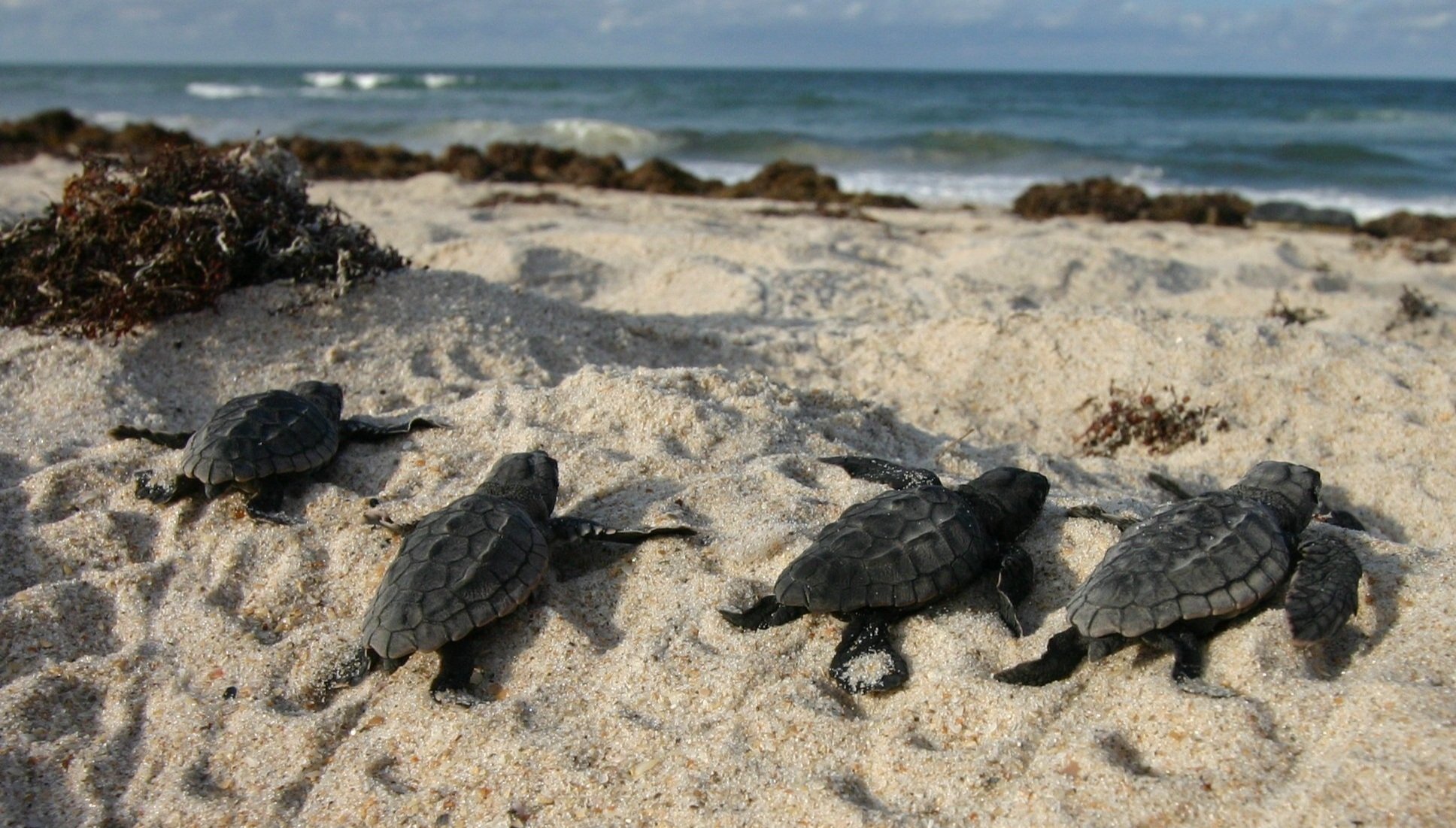
Library
Browse resources published by our research team.
In addition to full texts of our peer-reviewed articles, our library includes research digests that break down our peer-reviewed articles; in-depth reports that thoroughly examine a topic; commentaries that explain the significance of particular issues in wild animal welfare science; and short communications that briefly survey a field or topic.
Wild Animal Initiative adheres to Open Science TOP Guidelines. Read more here.
Improving pest management for wild insect welfare
Hollis Howe
Why should you care about insect welfare? Hollis Howe summarizes the literature on invertebrate sentience, estimates the number of insects affected by agricultural insecticide use, and describes the effects of common insecticidal compounds and other pest control methods.
Written by: Hollis Howe
Published: December 1, 2019
DOI: https://doi.org/10.71441/d4n3-hnty
Suggested citation: Howe H. (December 2021), Improving pest management for wild insect welfare, Wild Animal Initiative, retrieved [date], https://doi.org/10.71441/d4n3-hnty
Why insecticides?
Every year, approximately 100 million acres of American farmland are treated with lethal insecticides, killing or harming an estimated 3.5 quadrillion insects—according to our new report.
It’s currently uncertain whether insects can feel pain at all. But the sheer number killed by insecticides—and the potentially excruciating nature of those deaths—means that making pesticides more humane has a good chance of preventing large amounts of wild animal suffering.
Pesticide reform also has the advantage of being relatively easy to implement responsibly.
One of the biggest challenges to most wild animal welfare interventions is figuring out the net effect on all the species in the community. This is especially true when population sizes change. For example, falling wolf numbers might lead to rising coyote numbers, leading to falling fox numbers, leading to rising mouse numbers, leading to rising tick numbers—or they might not.
If we can replace one insecticide with another that kills the same number of insects less painfully, we can reduce suffering without changing the total insect population. That significantly narrows the range of possible unintended consequences.
The goal of this report is to lay a foundation for future projects to improve wild insect welfare by promoting more humane insect pest management practices.
Key takeaways
The evidence supporting insect sentience is sufficient to argue that, in combination with the large number of insects, we should afford some consideration to insect welfare.
Agricultural pest insect management practices may be a particularly tractable avenue for improving the expected welfare of a large number of insects.
At this point, key unknowns make it difficult to recommend a particular insecticide or non-insecticidal pest control method as more humane. However, nerve and muscle agents (such as organophosphates and carbamates, or pyrethroids and pyrethrins) are faster-acting than insecticides with other modes of action (such as insect growth regulators, or Bt toxins).
Non-insecticidal methods of pest control may be gaining popularity and should be considered when developing more humane pest insect management practices. The net welfare impact of non-lethal methods is dependent on ecological factors and the specific organisms involved.
Next steps
In addition to the report itself, I developed two tools to facilitate further research.
The first is a database of insecticidal compounds, their modes of action, and their insecticidal mechanisms. This database is under development and may be expanded to include pests targeted, brand names, and chemical fact sheets where available.
I have also developed a rough impact estimate table outlining a method for using a pest control literature review to calculate the minimum number of insects affected by U.S. agricultural insecticide use.
As part of our upcoming strategic planning and inter-organization coordination process, Wild Animal Initiative will be evaluating the course of our future research on insect welfare. Currently, it looks like the most promising direction would be to fill in the gaps necessary to evaluate specific insecticide interventions:
What are the economic injury levels (EILs) for particular crop-pest pairs?
Can EILs be used to generate estimates of the number of insects affected by pest management?
On which insect species and crops are particular insecticides or pest management methods used?
In the process of creating this report, many more questions arose than were answered. Despite this, the report provides an overview of the insect welfare landscape and the potential avenues for further intervention research.
Long-term design considerations for wild animal welfare interventions
How persistent and reversible should our interventions be? Simon Eckerström Liedholm explores two important factors in assessing the merits of interventions to improve wild animal welfare.
Written by: Simon Eckerström Liedholm
Published: December 30, 2019
DOI: https://doi.org/10.71441/bvpp-xh8w
Suggested citation: Eckerström Liedholm, S., (December 2019), Long-term design considerations for wild animal welfare interventions, Wild Animal Initiative, retrieved [date], https://doi.org/10.71441/bvpp-xh8w
Persistence and reversibility
When assessing the merits of different interventions to improve wild animal welfare, two prominent factors are (1) how persistent a certain intervention is and (2) how easy it is to reverse the effects given a bad outcome.
Reversibility is important because we can’t always predict upfront exactly how an intervention will turn out. If things go wrong, we want to be able to reverse the intervention to contain the damage. We anticipate having a better empirical understanding in the future, so to preserve option value, we probably want to delay persistent and hard-to-reverse interventions until we’re highly confident they’ll have positive effects.
Persistence, or the duration of the effect in expectation, is important because it will affect how much effort we would have to put into improving wild animal welfare by a certain amount. If the effects are very persistent, we only have to initiate the process once, then we can reap the benefits over a long period of time.
However, the benefits of higher cost-effectiveness of persistent interventions seem to be strongly outweighed by other factors in most cases. Firstly, most highly persistent interventions are very hard to reverse, which means we have to give up a lot of option value. Secondly, trying to implement highly persistent and hard-to-reverse interventions could stir up a lot of animosity, which would be damaging for the long-term stability of the wild animal welfare project.
Thus, it seems like if we have to choose between an intervention with low persistence but high reversibility and an intervention with high persistence but low reversibility, we should choose the former rather than the latter.
Striking a balance
There might be a way, however, to increase persistence in some scenarios without paying with reduced reversibility. More precisely: if we could find interventions that are persistent in the face of natural processes, while at the same time being highly reversible by humans, we could get some of the benefits of persistence, while avoiding the negative consequences of implementing irreversible interventions.
With continued work on their efficacy and safety, gene drives might possess these characteristics in the future. A gene drive is a genetic modification that makes itself more likely to be inherited. Gene drives can be persistent because they are able to modify the genome of every individual in a population or species. Gene drives can also, under some circumstances, be reversible. A secondary gene drive can target the primary gene drive, halting its spread and removing the changes it made. However, it is important to note that the safety and reversibility of gene drives is critically dependent on how much effort is put into making them safe and reversible, which is one reason why the development of policies regulating gene drives will be of high importance.
Despite gene drives being an important exception, most actions will probably be either non-persistent and reversible, or persistent and non-reversible. In my report, I explore three examples in the second category: extinctions, climate change, and energy efficiency improvements in plants. Even though all of these examples have somewhat unclear effects on wild animal welfare, they should probably be avoided due to the fact that they seem very hard to reverse, and will persist for a long time.
Cover photo: Adapted from “Loggerhead sea turtle hatchlings crawl to sea,” © Blair Witherington, Creative Commons

